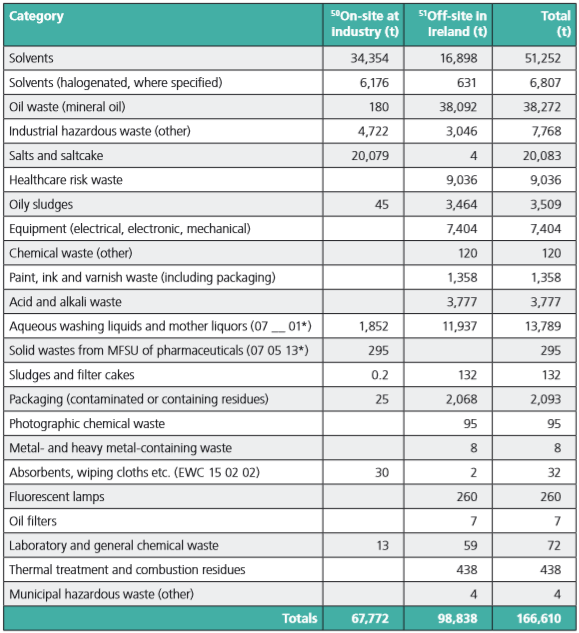LEGAL RESPONSIBLE >> OWNERSHIP HAZMAT PRODUCT/PUBLIC LIABILITY H&S REGULATION WASTE MANAGEMENT M.S.D.S
Hazardous Waste:
Hazardous Waste (HAZMAT) is generated by all sectors of Irish society, from large industry, healthcare to small businesses, households and farms. It is for the most part managed by a professional hazardous waste industry and is treated appropriately and in accordance with legal requirements. Large quantities of hazardous waste are generated, and there is scope to reduce this generation of waste through waste prevention programmes. Around half of Irish hazardous waste is exported for treatment. There are some problems with so-called ‘unreported’ hazardous waste in Ireland, where small amounts of consumer hazardous waste are produced in households and small businesses and can be inappropriately managed.
National Hazardous Waste Management Plan:
The Environmental Protection Agency (EPA) has prepared a Revised National Hazardous Waste Management Plan for the Republic of Ireland covering a six-year period from the date of publication (2014-2020). This third Plan is a revision of the National Hazardous Waste Management Plan 2008 – 2012 and sets out the priorities to be pursued over the next six years and beyond to improve the management of hazardous waste, taking into account the progress made since the previous plan and the waste policy and legislative changes that have occurred since the previous plan was published.
The objectives of the plan are;
- To prevent and reduce the generation of hazardous waste by industry and society generally;
- To maximise the collection of hazardous waste with a view to reducing the environmental and health impacts of any unregulated waste.
- To strive for increased self-sufficiency in the management of hazardous waste and to minimise hazardous waste export.
- To minimise the environmental, health, social and economic impacts of hazardous waste generation and management.
Prevention:
Prevention projects to reduce the generation of hazardous waste in certain priority sectors (pharmachem, agriculture, healthcare, households, publishing & printing and transport) should continue to be led by the EPA under the National Waste Prevention Programme.
Collection:
A comprehensive and accessible network of local drop-off facilities for householders and small businesses is recommended to tackle the problem of “unreported” hazardous waste. Enforcement activities should continue to focus on issues such as unauthorised burning of waste oil in order to increase collection and prevent environmental pollution.
Regulation:
A review of waste licensing/permitting legislation is recommended in order to establish a proportionate regulatory mechanism, including relief, to facilitate collection, transport and temporary storage of certain hazardous wastes from small sources pending proper treatment.
An all-island structure for capacity planning purposes would be ideal. Cooperation between appropriate authorities on both sides of the border concerning hazardous waste management issues should be explored.
Policy makers, regulators, producers, importers, generators and holders of hazardous waste all play a vital role in ensuring that the generation of such materials is minimised, and the materials are collected and treated correctly in accordance with waste management regulations.
Hazardous Waste Treatment in Ireland:
The reported quantity of hazardous waste treated in Ireland in 2011 was 166,610 tonnes, which is an increase of 1% since 2009. Although there was a decrease in the treatment of hazardous waste on-site at industry in 2011 (decreased by 9% on 2009 tonnage to 67,772 tonnes), there was an increase in the treatment of hazardous waste off-site at commercial facilities in Ireland (increased by 10% on 2009 tonnage to 98,838 tonnes).
The increase in the treatment of hazardous waste off-site at commercial facilities in Ireland was largely attributable to an increase in the treatment of waste oils and solvents.
Example: Volume of hazardous waste treatment in Ireland, 2011 (excluding contaminated soil):


